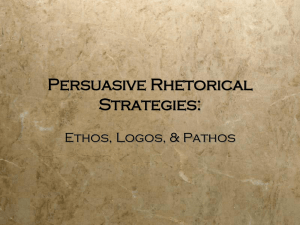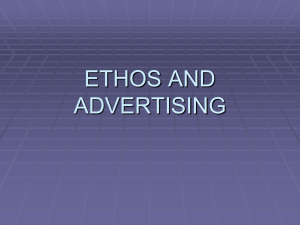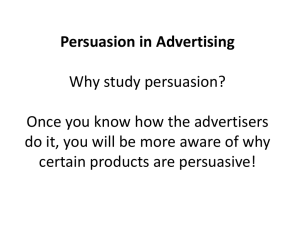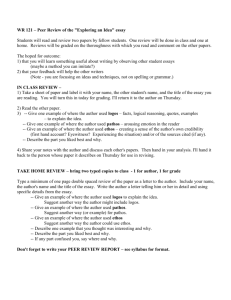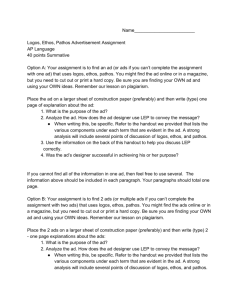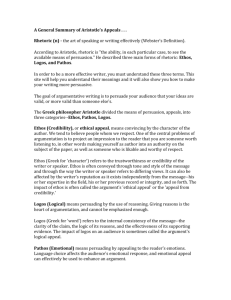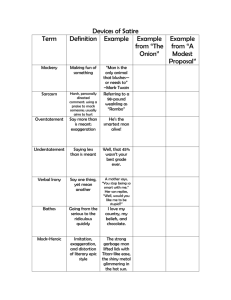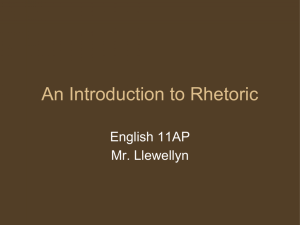Learning How to Identify the Three Main Rhetorical Styles
advertisement
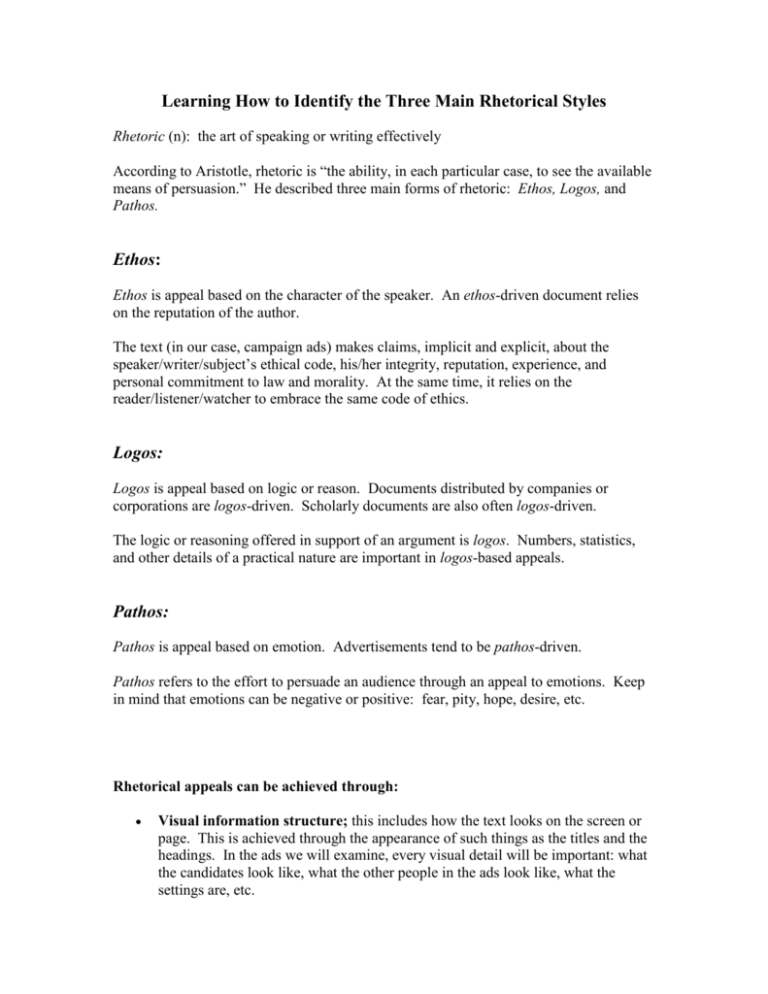
Learning How to Identify the Three Main Rhetorical Styles Rhetoric (n): the art of speaking or writing effectively According to Aristotle, rhetoric is “the ability, in each particular case, to see the available means of persuasion.” He described three main forms of rhetoric: Ethos, Logos, and Pathos. Ethos: Ethos is appeal based on the character of the speaker. An ethos-driven document relies on the reputation of the author. The text (in our case, campaign ads) makes claims, implicit and explicit, about the speaker/writer/subject’s ethical code, his/her integrity, reputation, experience, and personal commitment to law and morality. At the same time, it relies on the reader/listener/watcher to embrace the same code of ethics. Logos: Logos is appeal based on logic or reason. Documents distributed by companies or corporations are logos-driven. Scholarly documents are also often logos-driven. The logic or reasoning offered in support of an argument is logos. Numbers, statistics, and other details of a practical nature are important in logos-based appeals. Pathos: Pathos is appeal based on emotion. Advertisements tend to be pathos-driven. Pathos refers to the effort to persuade an audience through an appeal to emotions. Keep in mind that emotions can be negative or positive: fear, pity, hope, desire, etc. Rhetorical appeals can be achieved through: Visual information structure; this includes how the text looks on the screen or page. This is achieved through the appearance of such things as the titles and the headings. In the ads we will examine, every visual detail will be important: what the candidates look like, what the other people in the ads look like, what the settings are, etc. Color; this includes the color of the text, the background, and the graphics. The contrast of the colors of each of these items is also important. In addition, notice how often “patriotic colors” appear. Why would an upbeat political ad avoid black and white? Graphic images; this includes the other information in the document aside from the text. This is achieved through such things as icons, buttons, and photos. What kinds of symbols do you see? Remember, the ads are short; thus every detail is going to make some kind of point and appear for a reason. Prewriting: Go to the ad website, movingimage.us, click on OnLine Exhibitions, and then “Living Room Candidate,” pick a campaign year other than 2004, pick an ad from either candidate, and answer the following on a separate typed sheet: 1. Name of the ad (the name of the ad appears just above the small screen when you click on that particular ad). 2. Candidate. 3. Write down what you notice about: 1. the background music 2. the candidate’s appearance (in the various ways it’s displayed) 3. the setting(s) 4. the other people and things that appear in the ad (note at least 5 specific details.) 4. Having taken note of these details, what is your impression of the objective of this ad (and I don’t mean just “Pro Bush”)? 5. Do you see this ad as employing mainly ethos, logos, or pathos? Explain your choice.


